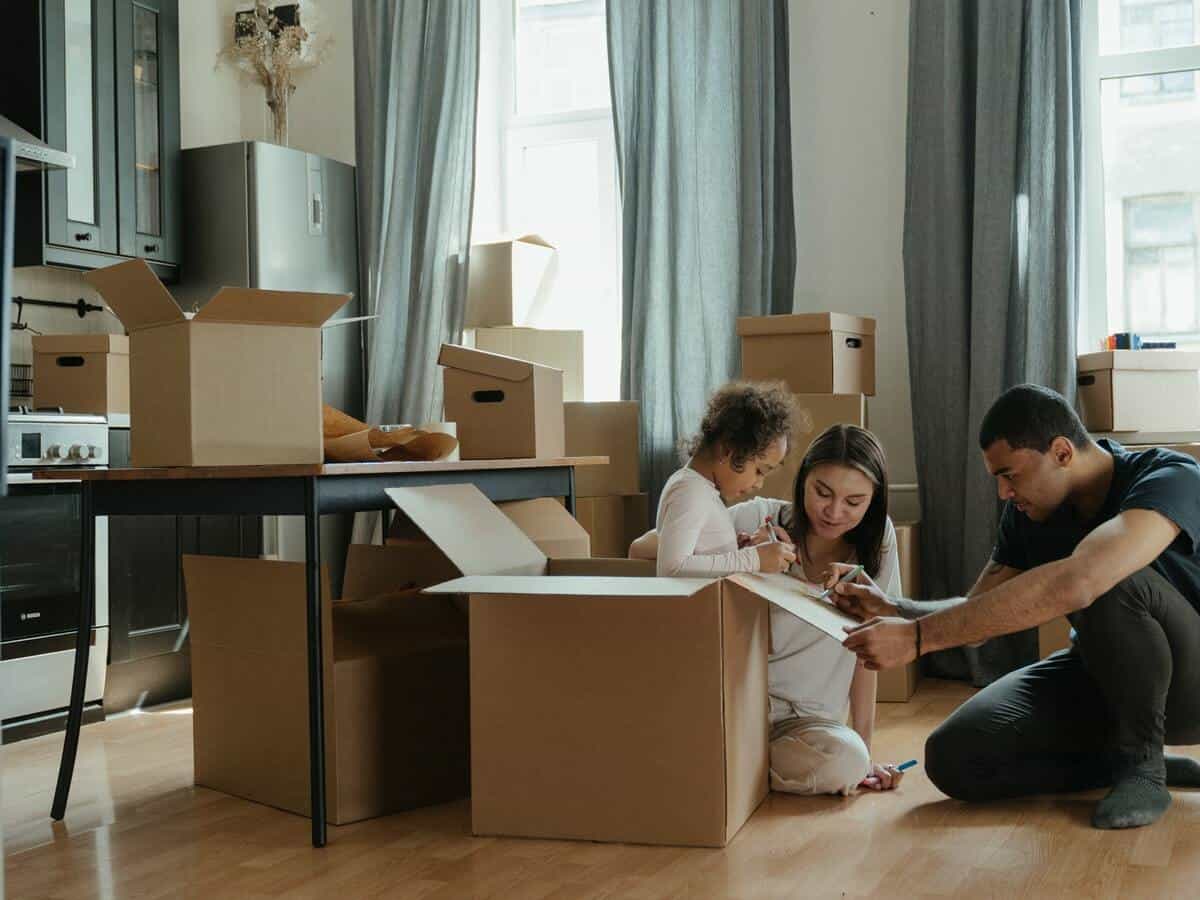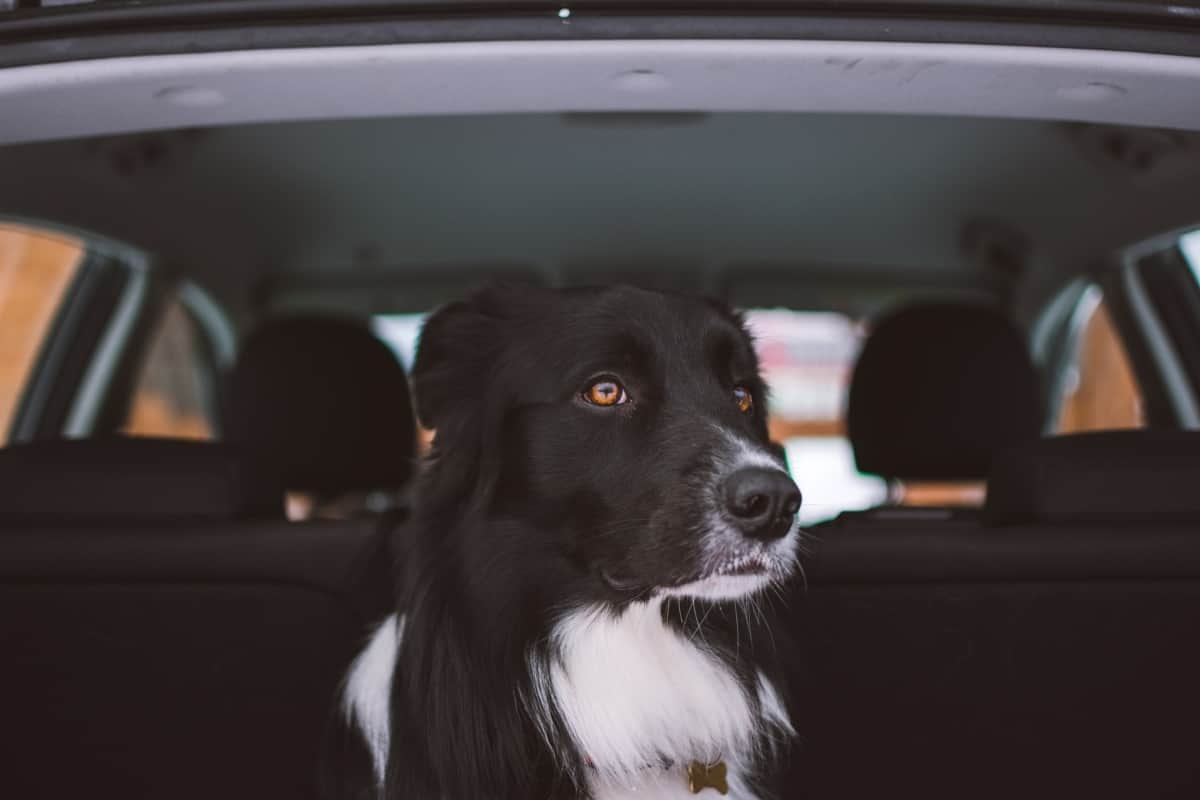Moving is an overwhelming process in its own right, but moving with a dog adds to this challenge extensively. Most people perish the thought of moving with multiple pets, and maybe you do as well. However, moving with a dog, or even moving with multiple dogs, can be easy if you plan the move in advance.
What to Do Before the Move
Bring Your Dog to Check Out Your New Home Before You Move In
If possible, bring your dog to your new home to get acclimated before the move. Let them sniff around and explore independently unless parts of the house are being worked on.
If your dog is naturally anxious or seems anxious when visiting, feed them lots of treats. Also, try to give them commands and say affirming things to them. Make sure you let them sniff the backyard, and maybe even let them walk around the neighborhood a bit.

Let Your Dog Sniff Your Moving Supplies
If you plan on packing up your dog’s favorite toys for the move, let them inspect the packing materials! Dogs are peculiar creatures that do not always like change. While they aren’t as bad as cats in this regard, they are very territorial and possessive.
Your dog is definitely not clueless about what is happening. Dogs can tell the difference in their environment; it is up to their owner to show them it is okay. If you start packing early, your dog is less likely to be stressed out due to the packing materials. This is because they will get used to them in their environment. If that doesn’t work, try rewarding them for being around the packing materials.
Prepare for the Trip to Your New Home
The majority of Americans live within an hour of where they grew up. However, if you plan on moving further, you may need to pack extra pet supplies. Bring a pet harness to keep your dog secure in the car, and maybe even blankets or towels to keep your backseat clean. Also, bring snacks to calm your dog down while driving. Snacks and treats are especially handy when you pull into the driveway of your new home.
If you plan on flying or taking the train to move, get your dog familiar with a carrier. If applicable, get a certificate to allow your emotional support animal (ESA) to travel with you. Most airlines do not allow ESAs to travel onboard anymore but do allow service dogs, so check ahead of time.
Schedule Out Your Move as Much as Possible Ahead of Time
People always say dogs are a good judge of character, but why do dogs constantly bark at mail carriers? This may seem ridiculous, but many dogs, especially younger ones, do not interact well with new things.
Many elements go into a move, and you may be too distracted to watch your dog. This is why it is important to schedule things ahead of time. If you have a dog sitter, movers and utility people can come simultaneously. However, if you have to watch your dog, schedule them at different times.

What to Do During the Move to Help Your Dog Adjust
Get Someone to Watch Your Dog
The best thing you can do while moving with a dog is to get someone to watch them. If you have a dog sitter, doggie daycare, family member, or friend that is used to watching your dog, take them there. That way, your dog will be out of the way when you are moving things in.
Moving day involves many car trips and a lot of pacing around your home. Not to mention, leaving your dog at your old home while it is empty can be stress-inducing for them. So, leaving them in a more familiar environment is better.
Set Up Air Conditioning Before You Get There
If you decide not to board or have someone take care of your dog during your move, ensure your home has air conditioning set up ahead of time. Schedule a technician to set up central air or plug-in window units before you arrive with your dog. One of the main rules in pet safety is keeping your pet cool. While you may be tired and sweaty from a move, especially on a hot day, dogs overheat much more easily than humans. If you’re feeling warm, your dog is hot.
Overheating can cause your dog to vomit uncontrollably and have diarrhea. Monitor your dog’s heart rate and breathing, and place them in a cool and dark spot if they are overheating. If your dog’s condition seems severe, take them to the vet or an emergency animal hospital.
Move the Big Items First
Dogs, especially young puppies, can be very energetic and run around a lot. Moving big or heavy furniture can be a safety hazard if no one is watching your dog. Most moving companies recommend that you keep pets in a shut room or hold onto them with a leash when moving furniture. However, you can also wait to bring them to your new home until all the large furniture is moved in.
It is also smart to unpack your dog’s things when they aren’t around. Your dog may get overly excited to see its stuff in a new environment and become too protective or playful. As previously stated, an amped-up dog is dangerous when moving heavy furniture.
Bring Water and Snacks
Many different types of people walk throughout your home during a move, so keep your dog calm by giving them lots of treats. From your dog’s perspective, utility workers bring a lot of different tools with them and interact with many new things and people. Your dog may not instantly understand they mean you no harm and goes into defensive or protective mode.
If your dog tends to run towards new people, give them snacks that occupy them for a long time. Bones, frozen treats, and long-lasting chews are your best option. Just make sure you aren’t rewarding bad behavior. Do not forget to bring their dog bowl. Dogs need food and water just as much as people!

What to Do After the Move
Maintain Their Routine For At Least the First Few Weeks After You Move
Your dog will have to adjust to the new environment a bit. It doesn’t matter if you changed neighborhoods or countries. To your dog, it feels like they moved to a new world. Dogs are perceptive to their new environment much more than humans due to their extreme sense of smell and hearing.
While it is essential to maintain their routine before the move, it is even more critical after moving with a dog. Don’t expect them to be instantly less stressed once you move all your things in.
If this is their daily routine before the move:
- 7:15 to 7:30 am: Go outside
- 8:00 am: Breakfast
- 10:00 to 10:35 am: Morning walk
- 11:00 am – 2:00 pm: Nap
- 2:00 to 2:20 pm: Playtime
- 4:30 pm: Dinner
- 4:50 to 5:30 pm: Afternoon walk
It needs to be the same after the move.
Once your dog is used to the environment around you, then you can break the schedule a bit. Dogs do not have accurate perceptions of time, but they are great with routines! Changing this after a move can affect their mood, health, and appetite.
Define Safe Spaces
Naturally, your dog will find the places it is most comfortable and take control. It is up to you to respect that and make sure they are safe in those areas. A dog’s safe space can be anywhere: on the couch, in the hallway, under the bed, etc. Dogs even have areas outside where they feel safe or routinely go potty. Try not to give them too much trouble about this or pull them away too quickly.
Deck out their spaces with a doggie bed they are used to and a bin of toys to incentivize them. It would also be wise to set up a separate area for them to eat and drink. Try to keep their bowls and areas away from entryways because that can distract them.




